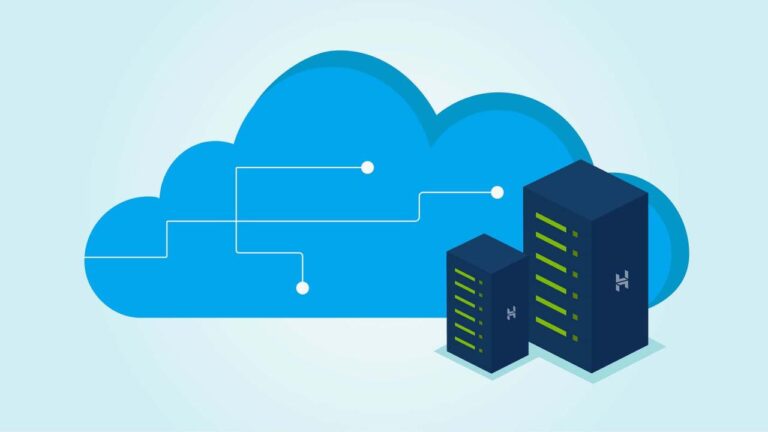In the dynamic and ever-expanding landscape of enterprise IT, the traditional dichotomy of “on-premises” versus “cloud” computing has largely dissolved. Today, organizations are increasingly adopting a pragmatic approach, combining the best of both worlds through hybrid server deployments. This strategic integration of diverse computing environments isn’t just a trend; it’s a foundational shift reshaping how businesses manage their data, run applications, and scale their operations. Exploring hybrid server deployments in-depth reveals a complex yet powerful synergy, offering unparalleled flexibility, resilience, and cost optimization, proving to be the pragmatic pathway for modern digital transformation.
The imperative for hybridity stems from the diverse and evolving needs of modern enterprises. While the public cloud offers immense scalability and agility, certain workloads, regulatory requirements, or legacy systems necessitate keeping resources within a private data center. Hybrid deployments bridge this gap, allowing workloads to seamlessly traverse between private, on-premises infrastructure and public cloud resources. This intricate dance requires sophisticated orchestration, robust networking, and a unified management approach to truly unlock its potential. This comprehensive analysis will delve into the architecture, advantages, challenges, and future of hybrid server deployments, providing insights for anyone navigating the complexities of contemporary IT infrastructure.
The Genesis of Hybridity

The journey to hybrid server deployments is a direct response to the limitations of purely monolithic on-premises infrastructures and the challenges of a “cloud-only” mandate.
A. Leveraging Existing Investments: Many enterprises have significant investments in existing on-premises server infrastructure, applications, and licensing agreements. A hybrid approach allows them to continue utilizing these assets while gradually migrating or expanding to the cloud.
B. Workload Suitability: Not all workloads are ideally suited for the public cloud.
1. Low Latency Requirements: Applications demanding extremely low latency (e.g., real-time trading, industrial control systems) often perform better when servers are physically closer to the data source or end-users.
2. Sensitive Data/Regulatory Compliance: Industries with strict data sovereignty, privacy, or compliance regulations (e.g., healthcare, finance, government) may require certain data or applications to remain within a private, controlled environment.
3. Legacy Applications: Older, monolithic applications might be difficult, costly, or risky to refactor for a cloud-native environment. Keeping them on-premises while integrating with cloud services is often a more viable option.
C. Disaster Recovery and Business Continuity: Hybrid deployments offer enhanced resilience. Organizations can use the public cloud as a cost-effective disaster recovery site, replicating data and applications to it without maintaining a secondary physical data center.
D. Bursting and Seasonal Demand: For workloads with unpredictable spikes or seasonal demand, organizations can “burst” excess capacity into the public cloud, leveraging its infinite scalability without over-provisioning expensive on-premises hardware.
E. Cost Optimization: For certain consistent, high-volume workloads, running them on-premises might be more cost-effective in the long run, while leveraging the cloud for variable or burstable needs provides overall economic flexibility.
F. Vendor Diversity and Risk Mitigation: Avoiding complete reliance on a single cloud provider or a single on-premises vendor helps mitigate vendor lock-in and reduces risk.
Architectural Foundations
A successful hybrid server deployment hinges on seamless integration and communication between disparate environments. This requires a robust architectural foundation.
A. Interconnectivity and Networking:
Establishing secure, low-latency, and high-bandwidth connectivity is the bedrock of hybrid deployments.
- VPN (Virtual Private Network):
- Secure Tunnels: Site-to-site VPNs create encrypted tunnels over the public internet, securely connecting the on-premises network to the public cloud virtual private cloud (VPC). Cost-effective for initial or lower-bandwidth connections.
- Limitations: Performance can be unpredictable due to reliance on the public internet, and bandwidth is typically limited.
- Direct Connect/Dedicated Lines:
- Private, High-Bandwidth Connections: Cloud providers offer dedicated, private network connections (e.g., AWS Direct Connect, Azure ExpressRoute, Google Cloud Interconnect) that bypass the public internet.
- Benefits: Provides highly reliable, low-latency, and high-bandwidth connectivity, ideal for large data transfers, real-time applications, and consistent performance needs. More expensive but essential for mission-critical workloads.
- Software-Defined Networking (SDN):
- Unified Network Management: SDN principles extend across hybrid environments, allowing for centralized management and orchestration of network policies, security rules, and traffic routing across both on-premises and cloud segments.
- Network Virtualization: Creating virtual networks that span both environments, providing seamless IP addressing and routing.
B. Identity and Access Management (IAM):
A unified identity system is crucial for consistent security and simplified administration.
- Centralized Identity Provider:
- Active Directory Integration: Extending on-premises Active Directory to the cloud (e.g., Azure AD Connect, AWS Directory Service for Microsoft AD) enables single sign-on (SSO) and consistent user authentication and authorization across both environments.
- Federated Identity: Using identity federation (e.g., SAML, OAuth) to allow users to authenticate once and access resources in both environments without re-authenticating.
- Role-Based Access Control (RBAC):
- Granular Permissions: Implementing granular RBAC across both on-premises servers and cloud resources ensures users and applications only have the minimum necessary permissions.
- Consistent Security Policies: Applying uniform security policies for access, encryption, and logging across the entire hybrid estate.
C. Data Management and Storage:
Managing data seamlessly across hybrid boundaries is a complex but vital aspect.
- Data Synchronization and Replication:
- Real-Time/Asynchronous Replication: Implementing tools and services to replicate data between on-premises databases/storage and cloud storage services. This is critical for disaster recovery, data analytics, and distributed applications.
- Storage Gateways: Cloud storage gateways (e.g., AWS Storage Gateway, Azure StorSimple) allow on-premises applications to use cloud storage as if it were local, providing caching, tiering, and replication capabilities.
- Hybrid Cloud Storage:
- Object Storage (S3, Azure Blob Storage): Leveraging cloud object storage for cost-effective, scalable, and highly durable storage of backups, archives, and unstructured data generated on-premises.
- Hybrid SAN/NAS: Extending on-premises Storage Area Networks (SANs) or Network-Attached Storage (NAS) to cloud-based storage services.
- Data Governance and Compliance:
- Data Residency: Ensuring sensitive data remains within geographical boundaries as required by regulations while still allowing for cloud-based processing of less sensitive or anonymized data.
- Data Encryption: Implementing consistent encryption (at rest and in transit) for all data across the hybrid environment.
D. Workload Portability and Orchestration:
The ability to move and manage applications seamlessly across environments is central to hybridity.
- Virtualization and Containerization:
- VMware Cloud on AWS/Azure VMware Solution: These services extend the familiar VMware environment from on-premises to the public cloud, allowing seamless migration of existing VMs without refactoring.
- Kubernetes: The de facto standard for container orchestration. Kubernetes clusters can span both on-premises and public cloud environments, enabling consistent deployment, scaling, and management of containerized applications. This is a powerful enabler of hybridity.
- Hybrid Cloud Management Platforms:
- Cloud Management Platforms (CMPs): Tools like VMware vRealize, Red Hat OpenShift, Microsoft Azure Arc, and Google Anthos provide a unified control plane to manage, monitor, and automate resources and applications across disparate hybrid environments.
- Orchestration and Automation Tools (Ansible, Terraform): Automating deployment, configuration, and management tasks across both private and public cloud infrastructure to ensure consistency and efficiency.
Advantages of Hybrid Server Deployments

The strategic integration of on-premises and public cloud resources offers compelling benefits.
A. Optimal Flexibility and Agility:
- Workload Placement Freedom: Organizations can strategically place workloads where they make the most sense based on performance, cost, security, and compliance needs.
- Rapid Scalability: Leverage the infinite scalability of the public cloud for burstable workloads or rapid expansion without the lead time and capital expenditure of building out on-premises capacity.
- Faster Innovation: Accelerate development cycles by using cloud-native services for new applications while keeping existing systems stable.
B. Enhanced Cost Efficiency:
- Pay-as-You-Go for Variable Loads: Avoid over-provisioning on-premises hardware by using the public cloud for fluctuating or seasonal demand, only paying for what you consume.
- Optimized Resource Utilization: Maximize the utilization of existing on-premises investments for consistent, high-volume workloads while offloading variable loads to the cloud.
- Reduced Capital Expenditure: Lower upfront costs for physical hardware by shifting some compute and storage to the cloud’s operational expenditure model.
C. Improved Resilience and Business Continuity:
- Robust Disaster Recovery: Utilize the public cloud as a cost-effective secondary site for disaster recovery, replicating data and applications without the need for a separate physical data center.
- High Availability: Distribute critical components of an application across on-premises and cloud environments to increase overall availability and reduce the impact of localized outages.
- Geographical Redundancy: Leverage the global footprint of public clouds to achieve geographical redundancy for disaster recovery.
D. Better Security and Compliance:
- Data Sovereignty: Keep highly sensitive data on-premises to meet strict regulatory requirements or data residency laws.
- Hybrid Security Posture: Implement a defense-in-depth security strategy that spans both environments, leveraging the cloud’s advanced security services while maintaining control over on-premises resources.
- Consistent Policy Enforcement: Apply uniform security policies and identity management across the hybrid environment, simplifying compliance audits.
E. Migration Strategy Flexibility:
- Phased Migration: Allows organizations to migrate applications to the cloud in phases, reducing risk and complexity compared to a “big bang” approach.
- Modernization Path: Provides a clear path for modernizing legacy applications by refactoring them into cloud-native components while keeping tightly coupled systems on-premises.
Challenges of Hybrid Server Deployments
Despite the compelling benefits, hybrid server deployments introduce significant complexities that organizations must carefully manage.
A. Increased Management Complexity:
- Unified Visibility: Gaining a single, unified view of resources, performance, and costs across disparate on-premises and multiple cloud environments can be challenging.
- Tool Sprawl: Managing different environments often requires different tools, leading to tool sprawl and increased operational complexity.
- Skill Gap: Requires IT teams with expertise in both on-premises infrastructure and specific cloud platforms, leading to a potential skill gap.
B. Network Latency and Bandwidth:
- Performance Bottlenecks: While direct connections help, latency between on-premises and cloud can still impact performance for tightly coupled applications, especially for large data transfers.
- Cost of Data Egress: Cloud providers charge for data moving out of their cloud. Large volumes of data transfer between on-premises and cloud can incur significant and sometimes unpredictable costs.
C. Security and Compliance Challenges:
- Extended Attack Surface: The hybrid environment inherently extends the attack surface, requiring consistent security policies, identity management, and monitoring across all interconnected systems.
- Compliance Across Environments: Ensuring compliance with regulatory requirements (e.g., GDPR, HIPAA) across different environments, each with its own compliance nuances, is complex.
- Shadow IT: Uncontrolled use of public cloud services without proper governance can create security vulnerabilities and compliance risks.
D. Data Consistency and Synchronization:
- Data Gravity: Moving large datasets between on-premises and cloud environments can be slow and expensive, impacting application performance and data consistency.
- Complex Data Pipelines: Building and managing robust data synchronization and replication pipelines across hybrid boundaries can be complex and error-prone.
E. Cost Management and Optimization:
- Cloud Cost Management: While serverless and pay-as-you-go models offer efficiency, optimizing cloud spending requires continuous monitoring and a deep understanding of cloud pricing models. Uncontrolled cloud usage can lead to “bill shock.”
- Right-Sizing: Properly right-sizing resources in both environments to avoid over-provisioning or under-provisioning requires careful planning and monitoring.
F. Vendor Lock-in (Multi-Cloud Complexity):
- Platform Dependence: While a hybrid approach reduces lock-in to a single public cloud or on-premises, using features specific to one cloud provider can still create lock-in within that provider’s ecosystem.
- Interoperability: Ensuring seamless interoperability between different cloud providers and on-premises technologies can be challenging.
The Future of Hybrid Server Deployments: Evolving Synergy
Hybrid server deployments are not a temporary stopgap but a long-term strategy, continuously evolving to meet new demands.
A. Advanced Hybrid Management Platforms (Unified Control Plane):
- AI-Powered AIOps: AI and machine learning will play an even greater role in providing unified visibility, predicting issues, automating remediation, and optimizing resource allocation across complex hybrid environments.
- Intent-Based Operations: Platforms will move towards intent-based operations, where IT teams specify desired business outcomes, and the platform automatically configures and manages the underlying hybrid infrastructure to achieve them.
- Automated Governance: Policies for security, compliance, and cost optimization will be automatically enforced across all hybrid resources.
B. Edge Computing Integration:
- Edge as Extension of Hybrid: Edge computing will become a critical extension of the hybrid cloud, with micro-data centers and edge servers acting as local processing hubs seamlessly integrated with both on-premises infrastructure and the public cloud.
- Hybrid AI: AI model training will occur in the central cloud, while inference happens at the edge or on-premises, managed by a unified hybrid control plane.
C. Smarter Workload Placement and Migration:
- Intelligent Placement: AI-driven systems will dynamically analyze workload characteristics (latency needs, data gravity, cost constraints, security requirements) and automatically recommend or execute optimal placement decisions across hybrid environments.
- Fluid Workload Mobility: Technologies will continue to improve for real-time, zero-downtime migration of complex stateful applications between on-premises and cloud environments.
D. Enhanced Security and Trust:
- Zero Trust Architecture: Zero trust principles will become pervasive across hybrid environments, requiring continuous verification of every user, device, and application regardless of its location.
- Confidential Computing: This technology, protecting data in use within hardware-secured trusted execution environments, will become more common for sensitive workloads spanning hybrid boundaries.
- Cyber Resilience: Focus on not just recovering from attacks, but maintaining critical operations during an attack across the distributed hybrid environment.
E. Sustainable Hybrid IT:
- Energy Optimization: Hybrid management platforms will incorporate energy consumption metrics, allowing organizations to dynamically shift workloads to the most energy-efficient locations (e.g., cloud regions powered by renewables, or on-premises facilities with free cooling) when possible.
- Resource Efficiency: Maximizing hardware utilization across both environments to reduce overall carbon footprint.
Conclusion
Hybrid server deployments, far from being a transitional phase, have established themselves as the pragmatic and powerful pathway for modern enterprises. By strategically blending the control and proximity of on-premises infrastructure with the agility and scalability of public cloud services, organizations can tailor their computing environment to the precise needs of each workload. While the journey introduces complexities in management, networking, and security, the benefits in terms of flexibility, cost optimization, and enhanced resilience are undeniable. As the digital landscape continues to evolve, driven by data, AI, and distributed computing, the sophisticated synergy of hybrid server deployments will remain a core tenet, empowering businesses to innovate faster, operate more efficiently, and navigate the pressures of an always-on world with unprecedented agility and control. The future of IT is undeniably hybrid.



